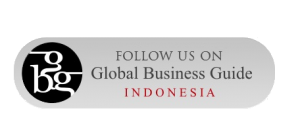In response to the COVID-19 pandemic, the interest in anti-viral fabrics has surged in order to provide an everyday solution to protect front-line medical workers from contracting and transmitting the virus. This has spurred a number of breakthroughs in anti-viral fabric technology for use in medical textiles, personal protective equipment (PPE) such as masks and gloves as well as everyday clothing for health-conscious consumers as studies have shown that viruses can live for days on textile surfaces. This increased interest in anti-viral fabric treatments has also led to the release of gimmicky products into the market that make claims which are not backed up by clinical testing. Here we look at how this ground-breaking technology works and the testing standards to look for when selecting the right anti-viral fabric treatment for your needs.
The Leading Anti-Viral Fabric Technologies
| Viroguard by Dymatic
|
HeiQ Viroblock
|
|
| What is it?
|
Viroguard by Dymatic is an anti-viral, anti-bacterial and anti-fungal chemical treatment that can be applied to all types of fabrics including nylon, polyester and cotton while still being completely safe against the skin. Being highly durable, it is effective for up to 40 washes and is widely used in clothing, towels, bedding, wet-tissues, and non-wovens.
|
HeiQ Viroblock is an award winning, anti-viral textile technology which can be applied to any kind of fabric to make it resistant to viruses and bacteria. The technology was originally developed during the Ebola crisis in 2013 to produce medical class 1 FFP2 masks used during the pandemic. It can be used for all types of fabrics including clothing and home textiles for up to 30 washes and up to 5 dry cleanings for wool fabrics.
|
| How Does it Work?
|
The technology operates by attacking the spike protein of the virus to degrade and denature it so that is loses its host cell medium by destroying the lipid envelope and changing the permeability of the small membrane protein. Within minutes of contact, the bacteria or virus is killed at a rate of above 99%.
|
HeiQ Viroblock technology has been developed using silver technology which attracts the oppositely charged viruses and binds permanently to their sulfur groups. The fatty spherical vesicle technology (Liposomes) then work to disintegrate the cholesterol content of the viral membrane so that the silver ions can then attack the core of the virus and destroy it over the course of 2 to 5 minutes.
|
| What Testing Standards Does It Meet?
|
The treatment has been clinically tested to ISO 18184 standards in which it proved 99.9% effective against the flu virus(H3N2) and obtained AAA level for FZ/T73023-2006 with a 98% efficacy rate against bacteria such as E-coli.
|
The treatment has been clinically tested according to the standards of ISO 18184 as strong antiviral and ISO 20743 as strong antibacterial against enveloped viruses and bacteria as well as ISO 20743 for residual virus infectivity (Sendai virus) which showed a rapid antiviral effect demonstrated within 2-5 minutes.
|
So, Does They Really Work?
The aforementioned technologies and some of their competitors have been clinically proven to be effective in destroying viruses and bacteria that come into contact with the surface of the fabric. That means that they stop fabrics from becoming breeding grounds for pathogens and viruses by denaturing them and stopping the chain of transmission.
Various fashion brands have begun marketing their products as anti-viral to appeal to consumers in the ‘new normal’ to provide peace of mind during the in-store retail experience and after purchasing. While a useful marketing tool, there are products being marketed as such which may not have passed internationally recognized anti-viral tests, meaning they do not actually disable and destroy the virus.
So, in answer to the question of do anti-viral fabrics really work, it depends on whether you are using a clinically proven technology such as those detailed above, and how you use them. The COVID-19 virus and similar airborne viruses are mainly transmitted through moisture droplets in the air that are created when an infected person talks, sneezes and coughs; therefore the most effective use of anti-viral fabrics is for items such as facemasks, gloves and medical textiles. When used for the correct products, anti-viral fabrics have been proven to be highly effective in protecting the wearer and those around them.
Shinta Indah Jaya offers a range of custom fabric treatments and works with selected partners to provide customers with access to the latest textile technologies that have been clinically proven including Viroguard and Viroblock. Contact us to learn more about how we can support your business through innovative products that meet the new demands posed by today’s challenges.



